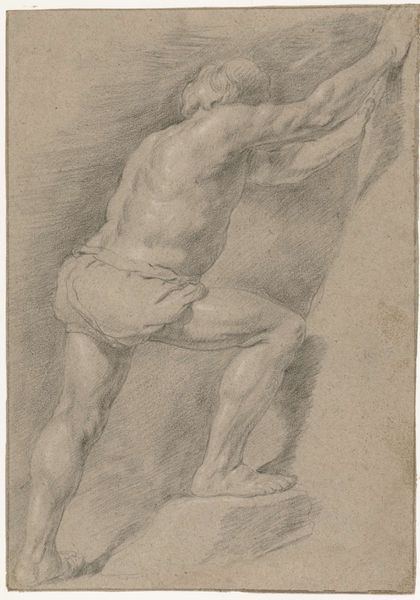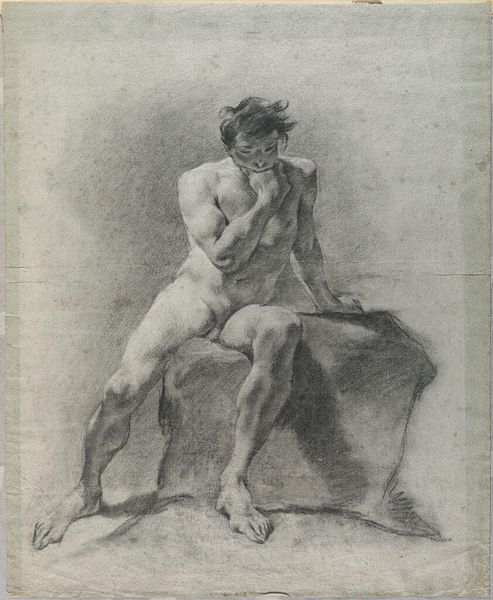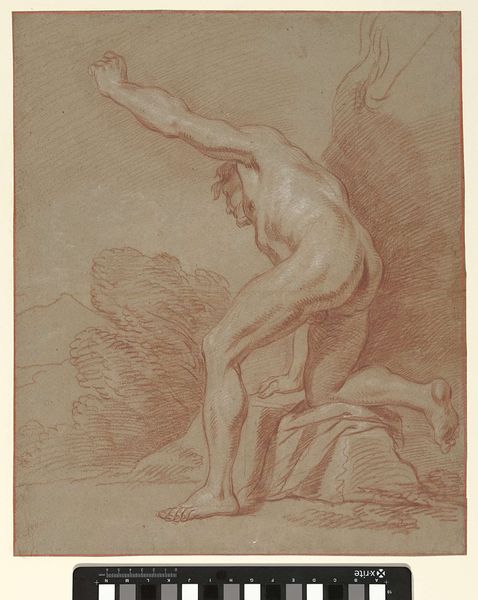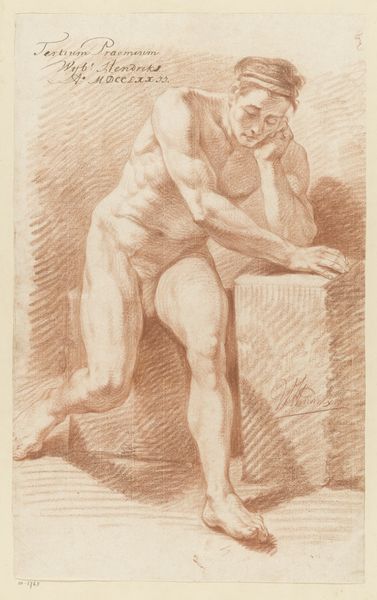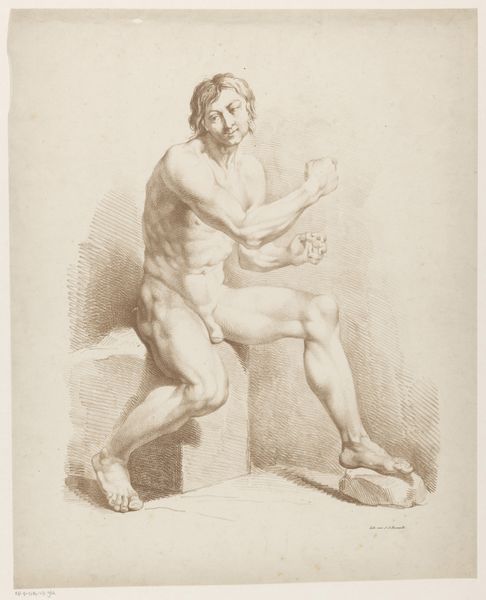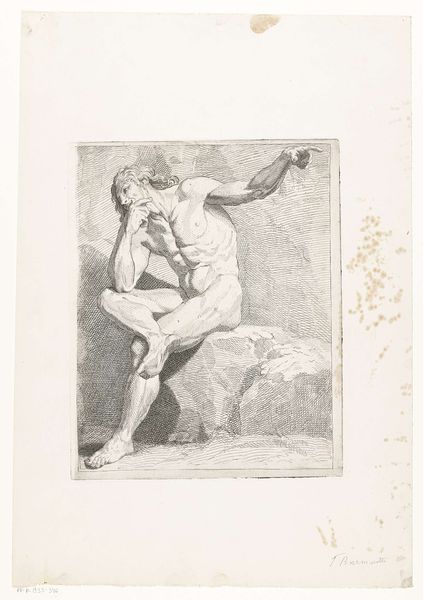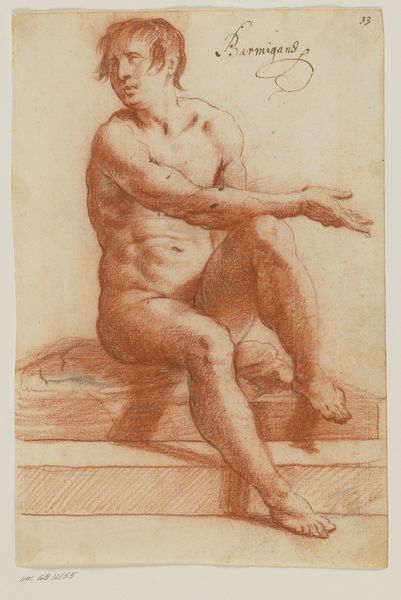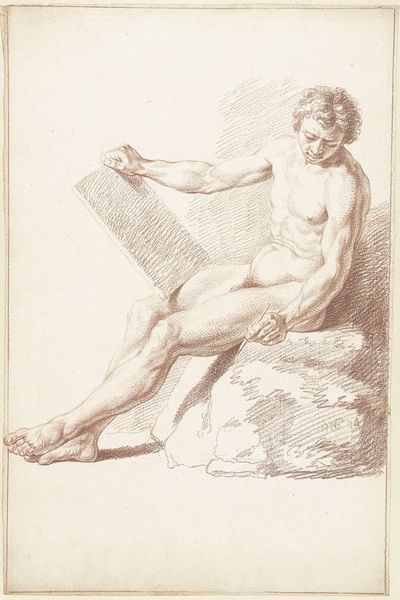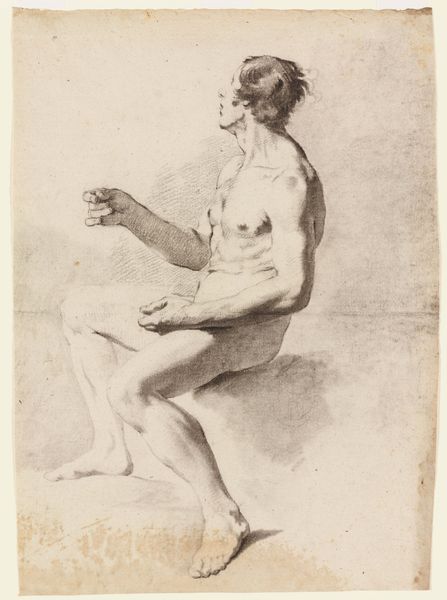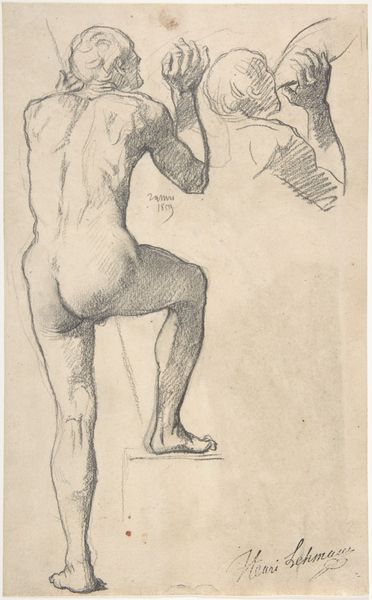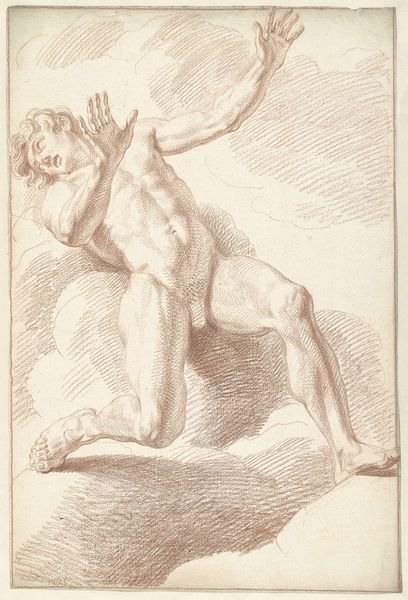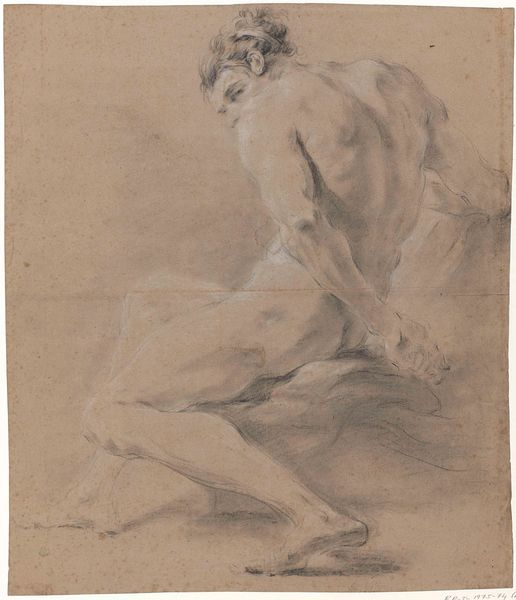
drawing, pencil
#
drawing
#
baroque
#
figuration
#
form
#
pencil drawing
#
pencil
#
academic-art
#
nude
#
realism
Dimensions: height 567 mm, width 483 mm
Copyright: Rijks Museum: Open Domain
Curator: I'm immediately struck by the dramatic use of light and shadow. The artist, Jacob de Wit, working around 1747, really uses that stark contrast to emphasize the musculature. It almost feels like he's pushing the boundaries of academic art towards something more… expressive? Editor: There’s an immediate stillness. Even though it’s a figure study, I find myself connecting it with feelings of pensiveness, of inner thought. Notice the left arm stretched outwards towards the top left corner of the drawing, is it a symbol of thought? Or even a visual yearning? Curator: That reaching gesture definitely hints at something beyond just anatomy. Considering de Wit’s place within the Dutch art scene of the mid-18th century, this drawing is not just about aesthetics; it's deeply entrenched in the art academies and their curricula. The goal was about developing skills that would later feature within historical works of the period. It's an academic exercise designed to prepare future history painters! Editor: The light, and its heavy contrasts really adds to this almost sublime melancholy; and yes, it is sublime. Do you feel how, the pencil marks across the paper offer an immediacy, but its classical subject holds an entire canon within its image? The weight of history is quite strong, even today. Curator: Precisely. The baroque style is more than mere aesthetics; it's a loaded choice. The grand scale, the overt display of skill, they were all tied to asserting a specific kind of power and authority, and of course that of the academies in which they were produced and trained! The power of institutions reflected in a study of form. Editor: I see echoes of struggle, and yet in repose, it really does feel, in that moment, a truly eternal peace, something so symbolic, but perhaps quite personal, too? Curator: And that interplay, that tension between personal expression and institutional mandate is, I think, what makes this work resonate across time. Editor: Absolutely, it is a dialogue between individual feeling, the collective symbol. Quite stirring, isn’t it?
Comments
No comments
Be the first to comment and join the conversation on the ultimate creative platform.
